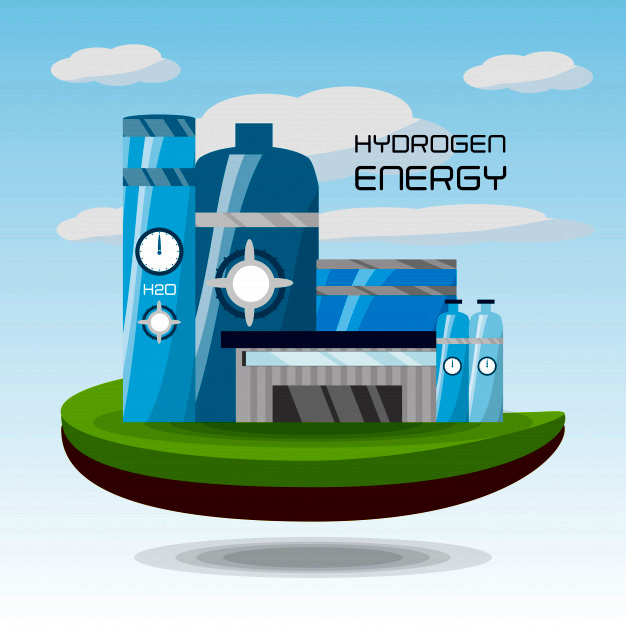Energy and economic development are long known to be interlinked as high energy demand is the hallmark of progressing economies of the world. However, the excessive use of non-renewable sources of energy such as coal, and petroleum has impacted the environment adversely. Therefore, unlike the past century when the economies were solely driven by the purpose to increase their energy production for fulfilling the demand, the today’s world is trying to achieve sustainable development by keeping the environment at heart while making major energy decisions. Towards this, the countries across the world are trying to harness maximum from renewable sources of energy like solar, wind and hydropower which are green and clean sources of energy.

Prof. Muhammed Hamdan 
Prof. Aravind Kumar Chandiran
Among all the renewable sources of energy , solar power is a great opportunity for India as many parts of the country receive sunlight throughout the year. Many Indian states, therefore, can reduce the combustion of non-renewable and polluting sources of energy such as coal and petroleum by substituting it with solar power. To give a major push towards solar energy, the National Solar Mission was launched in the year 2010 and since then the country has made great strides in solar technology. However, there remain major roadblocks which are in the way to realize India’s biggest solar dreams. One of the major challenges is the storage of solar energy from sunlight. Working around the same problem, Prof. Aravind Kumar Chandiran and his colleague Muhammed Hamdan at IIT Madras developed a stable solar water splitting device.
Solar cells, which convert sunlight to electricity, are the basic component of any solar device. The electricity produced by the solar cells is stored in batteries until further use. However, storing the energy in batteries is expensive. Another way to make use of the energy generated in solar cells energy is to split water to produce hydrogen. Hydrogen is a zero-emission and high calorific fuel which can be used for driving electric vehicles. Primarily, oxide-based semiconductors have been used as a material for solar water splitting devices, however, since the last decade halide perovskites are being hailed as a better photovoltaic material.
“A new class of semiconductor-based on halide perovskites attracted a lot of attention of solar cell community, in the last 10 years, because of their excellent photovoltaic performance. Conversion efficiency crossed 25% in less than a decade since its first successful inception. Although this class of material shows good photovoltaic performance, their stability in the ambient or aqueous medium is poor to implement them in photoelectric chemical cell. On one hand, we have oxide semiconductors which are stable, but do not possess good visible light absorption, whereas the halide perovskites possess good absorption property, but not the stability,” says Dr. Aravind Kumar Chandiran, Assistant Professor at IIT Madras, while explaining the problem which limits the use of perovskites in solar fuel systems, specifically to split water for hydrogen production.
In their latest research, which published in the prestigious international journal AngewandteChemie International Edition, the team reports discovery of a kind of perovskite which are stable and shows their utility in making solar fuel systemthat splits water to produce hydrogen fuel. This research paves the path of use of perovskites in solar fuels technology.
“In our lab, we recently discovered that Cesium Platinum Iodide Perovskite, which is a sub-class of perovskites called vacancy-ordered halide perovskites, to be stable in ambient, extreme acidic and basic media. Infact this is the only halide perovskite material in the whole world that is stable in such extreme acids/bases. This material also absorbs the entire sunlight. In our work, we successfully employed this material to make a photoelectrochemical cell that splits water and also demonstrated excellent stability,” adds Prof. Aravind.
“Chandiran et. al. developed a vacancy ordered double perovskiteCesium Platinum Iodide Perovskite, a magical material, which is not only stable in the presence of moisturebut it is also stable at low pH. This is a breakthrough in terms of materialdevelopment and it has been successfully shown to catalyze the hydrogen evolution reaction, which can be in turn used as a chemical fuel. This material isextremely easy to synthesize and doesn’t require any sophisticated equipment;hence it has immense potential for commercialization,” says Prof. AswaniYella, Professor at IITBombay, who is an expert in the same field.

Excited by the results of this study, the researchers are planning to scale-up this lab-scale water splitting device to a large area and test their efficacy of solar energy conversion. They are also planning to employ Cesium Platinum Iodide Perovskite for recycling of carbon dioxide which is a greenhouse gas to form value-added products like hydrocarbon fuels. This can potentially reduce the carbon dioxide level in the atmosphere to a great extent. Given the race towards renewables, the research has a huge potential to fascinate more researchers to explore new catalysts for water splitting using halide perovskites.
Article by Aditi Jain
Here is the link to the research article:
https://doi.org/10.1002/anie.202000175
https://onlinelibrary.wiley.com/doi/10.1002/anie.202000175










